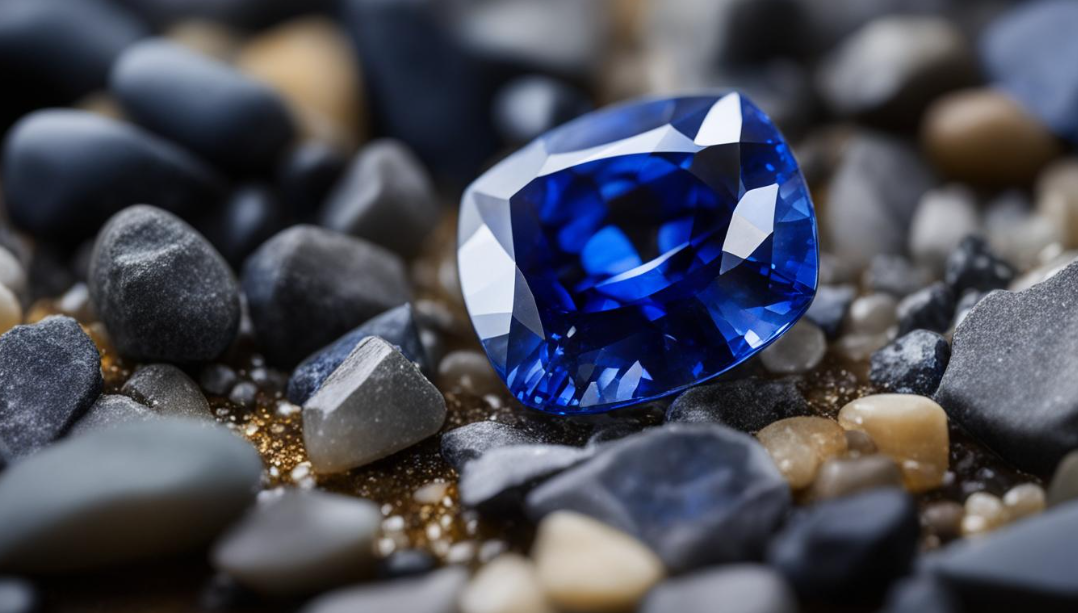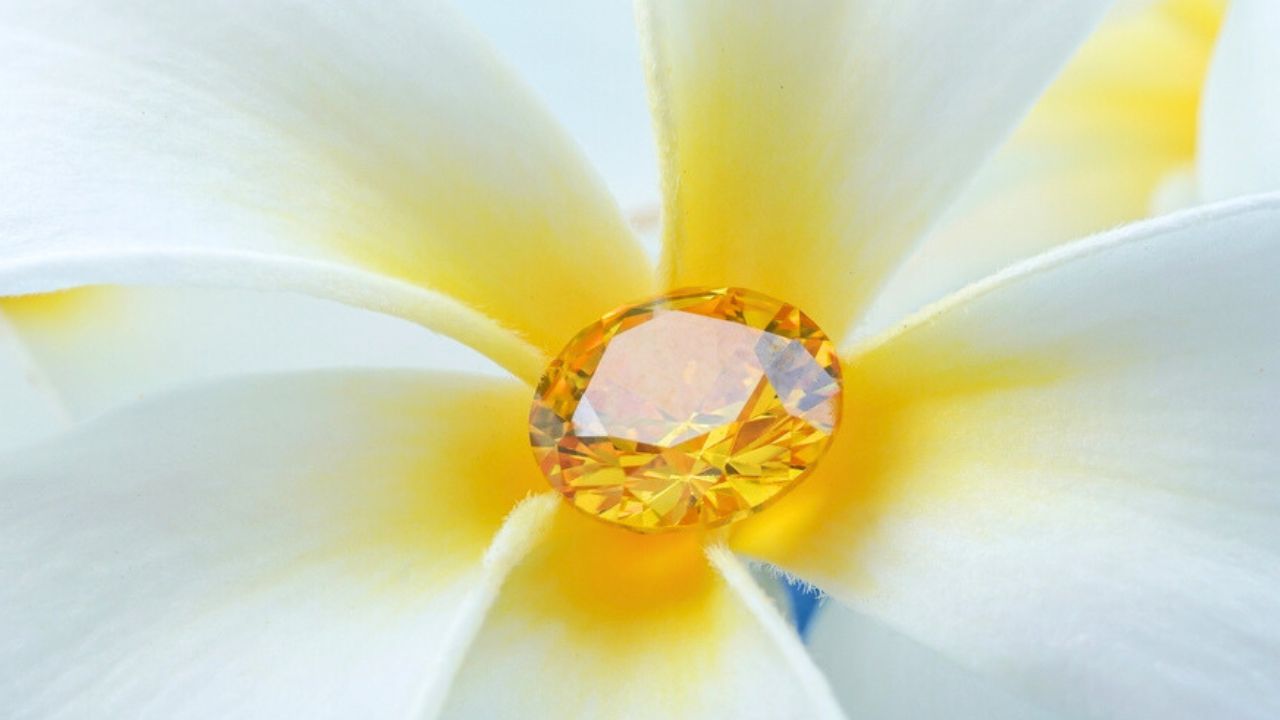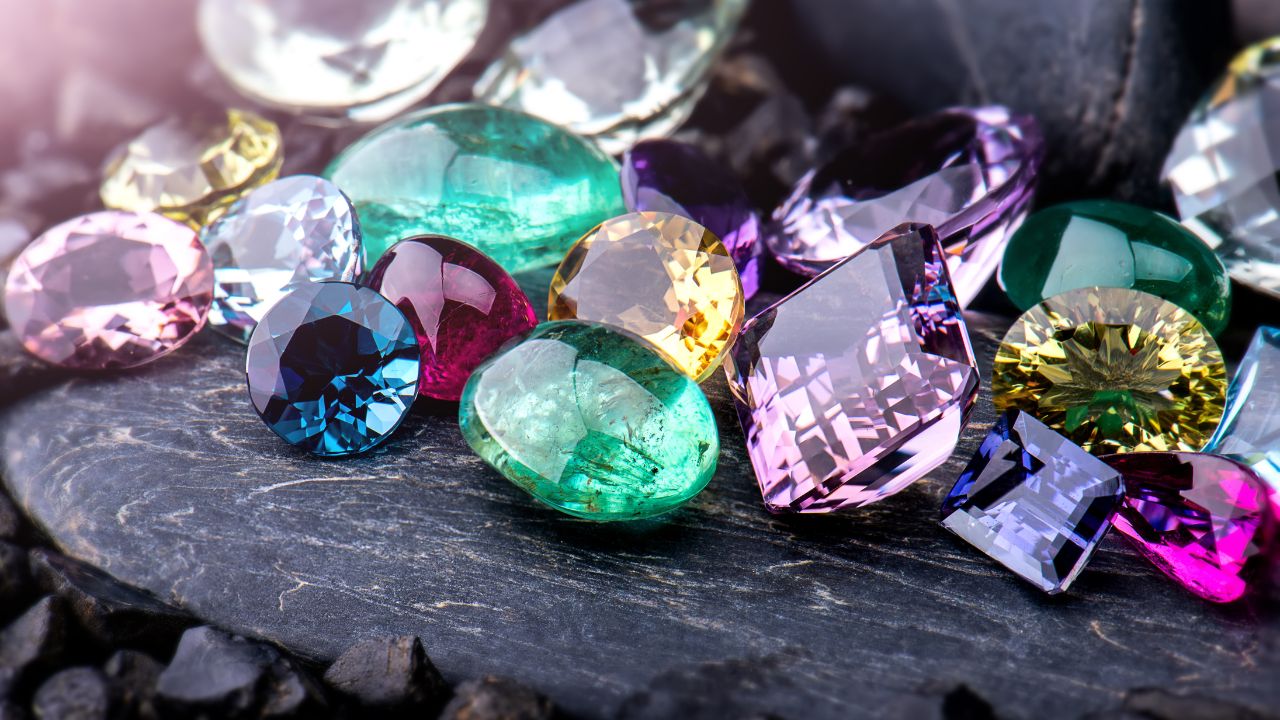
Best Quality Sapphires in the World
Blue sapphires are prized for their unmatched beauty and timeless elegance. Originating from various locations across the globe, these gemstones captivate the hearts of sapphire enthusiasts, jewelry lovers, and collectors alike. Discover the world's best sapphires, known for their top-tier quality and exceptional allure.
The Variety of Sapphire Colors
While blue sapphires are the most well-known, sapphires come in a wide range of colors. Sapphires that are not blue are known as fancy sapphires and can be found in colors such as pink, purple, orange, yellow, and green. Color saturation and intensity play a significant role in determining the value of a sapphire. Blue sapphires with strong to vivid color saturation are highly valued, with the most desirable shades being velvety blue to violetish blue. Color-change sapphires are another unique variety, displaying different colors under different lighting conditions.
When it comes to fancy sapphires, pink and purple are particularly sought after. Pink sapphires range from delicate pastel shades to vibrant, deep pinks. Purple sapphires exhibit a range from light lavender to rich, royal purple tones. Orange and yellow sapphires offer warm and fiery hues, while green sapphires evoke a sense of nature and tranquility. Each color variation has its own charm and appeal, enticing collectors and jewelry enthusiasts alike.
It's worth noting that not all fancy sapphires display uniform color throughout the stone. Some may exhibit color zoning, where different areas of the gemstone have varying color intensities. This unique feature adds depth and character to the sapphire, making it even more captivating. The beauty of sapphires lies not only in their classic blue hue but also in the mesmerizing array of vibrant colors they possess.
The Variety of Sapphire Colors:
| Color | Description |
|---|---|
| Blue | The most well-known color of sapphires, ranging from light blue to intense velvety blue. |
| Pink | Delicate pastel pink to vibrant, deep pink shades. |
| Purple | Light lavender to rich, royal purple tones. |
| Orange | Warm and fiery orange hues. |
| Yellow | Yellow sapphires ranging from light canary yellow to deep golden shades. |
| Green | Natural and soothing green tones reminiscent of nature. |
| Color-Change | Sapphires that exhibit different colors under varying lighting conditions. |
Whether you prefer the timeless elegance of blue sapphires or the captivating allure of fancy sapphires, the variety of colors available ensures that there is a sapphire to suit every taste and style. Explore the world of sapphire colors and discover the beauty that awaits within these exquisite gemstones.

The Importance of Sapphire Origin
The origin of a sapphire plays a crucial role in determining its value and desirability. Certain regions have gained a reputation for producing high-quality sapphires, with Sri Lanka, Madagascar, Burma, and Kashmir being prominent sources. Sri Lanka and Madagascar are major suppliers of blue sapphires, with their stones often displaying similar color tones and internal crystal characteristics. Burmese sapphires are highly regarded for their quality, albeit in smaller quantities, while Kashmir sapphires are renowned for their rarity and velvety qualities.
However, determining the origin of a sapphire can be challenging and subject to inconsistencies. While some laboratories claim to determine the origin of a sapphire through various techniques, such as trace element analysis, these reports may lack consistency and reliability. The Natural Sapphire Company recommends that collectors and jewelry enthusiasts focus on the visual beauty and rarity of the stone rather than placing excessive importance on its origin.
Comparison of Sapphire Origins
| Sapphire Origin | Characteristics | Market Value |
|---|---|---|
| Sri Lanka (Ceylon) and Madagascar | Similar color tones and internal crystal characteristics | Comparable prices |
| Burma (Myanmar) | Excellent quality, albeit in smaller quantities | Slightly higher prices |
| Kashmir | Exceptionally rare, similar velvety qualities as Madagascar sapphires | Considerably higher prices |
While the origin of a sapphire can hold historical significance, it is important to prioritize the visual beauty and rarity of the gemstone. Sapphire enthusiasts should appreciate the exceptional qualities offered by sapphires from various regions, recognizing that the beauty of a sapphire can surpass geographical boundaries. By valuing a sapphire based on its individual characteristics rather than its origin, collectors and jewelry lovers can truly unearth the beauty of these magnificent gemstones.
Understanding Sapphire Characteristics
When it comes to evaluating sapphires, understanding their unique characteristics is essential. The following factors play a significant role in determining the quality and value of these exquisite gemstones:
Sapphire Clarity:
Clarity refers to the presence of inclusions or internal flaws within the sapphire. While it is common for sapphires to have inclusions, the type and extent of these inclusions can impact the stone's value. Common inclusions include silk, included mineral crystals, and color zoning. It is important to note that not all inclusions are considered negative, as certain types, like silk, can enhance the beauty of a sapphire by creating a unique visual effect.
Asterism and Star Sapphires:
Asterism is a phenomenon displayed by certain sapphires, where a star-shaped pattern appears under focused lighting. This effect is caused by the presence of needle-like inclusions that intersect within the crystal structure. Sapphires that exhibit asterism are known as star sapphires and are mesmerizing in their appearance. The value of star sapphires is determined by the intensity, sharpness, and position of the star.
Sapphire Cut:
The cut of a sapphire refers to how the stone has been shaped and faceted. A well-cut sapphire enhances its color, brilliance, and overall visual appeal. The goal of a skilled lapidary is to maximize the stone's color, optimize its proportions, and retain as much weight as possible. The cut can greatly influence the sapphire's beauty, as a poorly cut stone may appear dull and lifeless, even if it possesses excellent color and clarity.
Color Zoning:
Sapphires can sometimes exhibit color zoning, where different areas of the stone display variations in color intensity or hue. This occurs due to variations in the growth process of the crystal. While color zoning is not necessarily considered a flaw, sapphires with consistent color distribution are generally preferred.
| Characteristic | Description |
|---|---|
| Sapphire Clarity | Presence of inclusions or flaws |
| Asterism and Star Sapphires | Display of a star-shaped pattern under lighting |
| Sapphire Cut | The shape and faceting of the stone |
| Color Zoning | Variations in color intensity or hue |
The Myths and Realities of Sapphire Origins
When it comes to determining the origin of sapphires, there are various myths and realities that need to be addressed. Many laboratories claim to provide accurate origin reports for sapphires, but the reality is that inconsistencies and flaws in these reports exist. The Natural Sapphire Company advises against solely relying on the origin of a sapphire to determine its value.
While the origin of a sapphire can hold historical and sentimental significance, it is important to prioritize the visual beauty and rarity of the stone. GIA reports and other origin determinations may lack consistency and reliability, making them less reliable indicators of value. Instead, collectors and enthusiasts should focus on the overall quality and characteristics of the sapphire, such as color, clarity, and cut.
In the world of sapphires, beauty surpasses origin. The Natural Sapphire Company believes that the origin of a sapphire should not overshadow its inherent qualities. Different origins may produce sapphires with similar visual appearances, making it difficult to distinguish between them. Ultimately, it is the individual characteristics of each sapphire that should be valued and appreciated.
The Prominence of Sri Lanka and Madagascar Sapphires
Sri Lanka, also known as Ceylon, and Madagascar are renowned for their high-quality blue sapphires. These two countries consistently produce sapphires with similar color tones and internal crystal characteristics, making it difficult to distinguish between their gemstones. The visual appearance and quality of sapphires from Sri Lanka and Madagascar are often indistinguishable, offering collectors and jewelry enthusiasts a wide selection of exquisite blue sapphires.
Both Sri Lankan and Madagascan sapphires exhibit beautiful blue hues, ranging from light to dark shades. The visual appeal of these sapphires is comparable, as they possess excellent clarity and brilliance. This similarity in color and quality gives buyers the opportunity to find stunning blue sapphires at similar price points from either origin.
When considering Sri Lanka and Madagascar sapphires, it is important to evaluate the specific visual characteristics of each stone, such as color saturation, clarity, and cut. Additionally, the overall rarity of the sapphire should also be taken into account. The Natural Sapphire Company recommends consulting with a reputable gemologist to explore the wide range of Sri Lanka and Madagascar sapphires available, ensuring that you find a sapphire that meets your individual preferences and requirements.
| Aspect | Sri Lanka Sapphires | Madagascar Sapphires |
|---|---|---|
| Color | Range from light to dark blue | Range from light to dark blue |
| Clarity | Excellent clarity | Excellent clarity |
| Cut | Expertly cut to maximize color and brilliance | Expertly cut to maximize color and brilliance |
| Price | Comparable to Madagascar sapphires | Comparable to Sri Lanka sapphires |
Note: The above table provides a general comparison of the key aspects between Sri Lanka and Madagascar sapphires. Individual characteristics may vary based on specific gemstones and their respective qualities.
The Allure of Burmese Sapphires
Burmese sapphires have long captivated the hearts of gemstone enthusiasts with their exceptional quality and allure. Renowned for their deep, vibrant colors and remarkable clarity, these sapphires are highly sought after by collectors and jewelry connoisseurs. The unique appeal of Burmese sapphires lies not only in their superior visual characteristics but also in their larger sizes, which make them even more desirable.
When it comes to Burmese sapphires, their higher prices are a reflection of their exceptional quality and rarity. These gemstones command a premium due to their impeccable color, exceptional clarity, and extraordinary sizes. While prices for Burmese sapphires can be 50% to 100% higher than sapphires from other origins, the investment is well worth it for those who appreciate the finest quality gemstones.
It is important to note that while origin plays a role in the pricing of Burmese sapphires, it should not be the sole determining factor. The Natural Sapphire Company advises focusing on the visual beauty and rarity of the sapphire rather than placing excessive importance on its origin. Each Burmese sapphire is a unique work of natural art, with its own individual characteristics that make it truly exceptional.

The Allure of Burmese Sapphires
| Characteristics | Description |
|---|---|
| Color | Bright and vibrant hues, ranging from deep blue to rich royal blue |
| Clarity | Exceptionally clear with minimal inclusions, enhancing their brilliance |
| Size | Larger sizes, showcasing the true beauty and intensity of the sapphire |
| Pricing | Higher prices compared to sapphires from other origins due to their superior quality and rarity |
| Appeal | Highly sought after by collectors and jewelry connoisseurs for their exceptional beauty |
The Legacy of Kashmir Sapphires
Kashmir sapphires hold a remarkable legacy, revered for their rarity and exquisite beauty. These gemstones command high prices in the market, reflecting their exceptional qualities and limited availability. However, the identification of true Kashmir sapphires can be a challenge, as Madagascar sapphires often display similar velvety qualities that are characteristic of the Kashmir origin.
Despite the identification challenges, Kashmir sapphires continue to captivate gem enthusiasts with their mesmerizing allure. Their scarcity has made them even more desirable among collectors and jewelry connoisseurs, resulting in steep price tags. The visual beauty and allure of these gemstones transcends their origin, and the Natural Sapphire Company recommends considering the individual characteristics of each sapphire over its place of origin when making a purchasing decision.
Challenges in Identifying Kashmir Sapphires
The similarity between Kashmir sapphires and those from Madagascar adds to the identification complexities. Both origins produce sapphires with velvety qualities that are highly sought after. However, true Kashmir sapphires are exceptionally rare today due to the limited availability of new deposits. Therefore, it is crucial to rely on reputable gemologists who possess the expertise to differentiate between these origins based on a comprehensive analysis of color, clarity, and other defining characteristics.

| Key Characteristics | Kashmir Sapphires | Madagascar Sapphires |
|---|---|---|
| Color | Rich velvety blue to violetish blue | Similar velvety qualities |
| Rarity | Exceptionally rare | Relatively rare |
| Price | Considerably higher | Lower than Kashmir sapphires |
While Kashmir sapphires continue to command premium prices, it is essential to recognize that their higher value is primarily due to their rarity rather than solely their origin. The Natural Sapphire Company advises focusing on the visual beauty and individual characteristics of a sapphire, as these aspects ultimately determine its true worth. By appreciating the uniqueness of each gemstone, collectors and jewelry enthusiasts can fully embrace the allure of Kashmir sapphires, regardless of their comparative rarity or market value.
Conclusion
When it comes to the best quality sapphires, it is essential to consider a variety of factors. The ideal sapphire possesses excellent characteristics such as vibrant color, high clarity, and a well-executed cut. However, it is important to note that the value determination of a sapphire extends beyond its origin. While the historical significance of sapphire origins cannot be denied, the beauty and rarity of a stone should take precedence.
The Natural Sapphire Company believes that the visual allure of a sapphire surpasses geographical boundaries. Collectors, jewelry enthusiasts, and sapphire lovers alike can appreciate the exceptional qualities offered by sapphires from various regions. By focusing on the individual merits of each stone, one can truly appreciate the outstanding beauty and uniqueness of sapphires.
In conclusion, the best quality sapphires are not solely defined by their origin but rather by their visual appeal and rarity. The value of a sapphire lies in its ideal characteristics and inherent beauty, which can captivate individuals regardless of where it originated. Whether you are a jewelry lover or a collector, the journey of exploring and admiring sapphires from different regions can be truly fascinating and rewarding.
FAQ
What are the best quality sapphires in the world?
The best quality sapphires in the world can be found in various locations, including India, Myanmar, Sri Lanka, Thailand, and Australia.
What colors do sapphires come in?
Sapphires come in a wide range of colors, including blue (the most well-known), pink, purple, orange, yellow, and green.
How does the origin of a sapphire impact its value?
The origin of a sapphire can impact its value, with certain locations historically associated with high-quality sapphires. However, the Natural Sapphire Company recommends focusing on the visual beauty and rarity of the stone rather than its origin.
What characteristics should I consider when evaluating a sapphire?
When evaluating a sapphire, important characteristics to consider include color, clarity, cut, and overall visual beauty.
Can laboratories accurately determine the origin of sapphires?
Reports claiming to determine the origin of sapphires may lack consistency and reliability. The Natural Sapphire Company does not recommend basing the value of a sapphire solely on its origin.
What are the major producers of blue sapphires?
Sri Lanka (Ceylon) and Madagascar are major producers of blue sapphires, with their stones often being indistinguishable from each other.
Are Burmese sapphires considered high quality?
Yes, Burmese sapphires are known for their high quality. They are often priced higher than sapphires from other locations due to their larger sizes.
Why are Kashmir sapphires highly sought after?
Kashmir sapphires are held in high regard for their exceptional quality and rarity. However, identifying true Kashmir sapphires can be challenging, as Madagascar sapphires often display similar characteristics.
What should I prioritize when considering the value of a sapphire?
The Natural Sapphire Company believes that the visual beauty and rarity of a sapphire should take precedence over its origin when determining its value.

 While the origin of a sapphire may be of interest to some, it should not be the sole determining factor in assessing its value. The market for sapphires is filled with inconsistencies and challenges when it comes to accurately identifying their origin. Therefore, focusing on the visual beauty and rarity of a sapphire is a more reliable approach to truly appreciating these remarkable gemstones.
While the origin of a sapphire may be of interest to some, it should not be the sole determining factor in assessing its value. The market for sapphires is filled with inconsistencies and challenges when it comes to accurately identifying their origin. Therefore, focusing on the visual beauty and rarity of a sapphire is a more reliable approach to truly appreciating these remarkable gemstones. Comparison of Sri Lanka and Madagascar Sapphires
Comparison of Sri Lanka and Madagascar Sapphires
